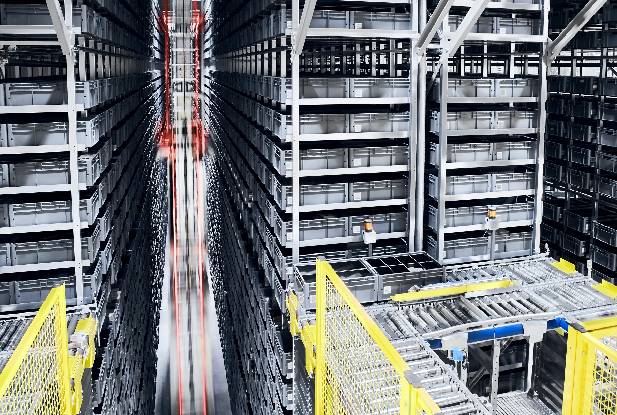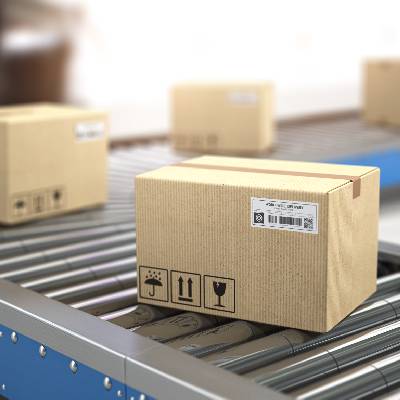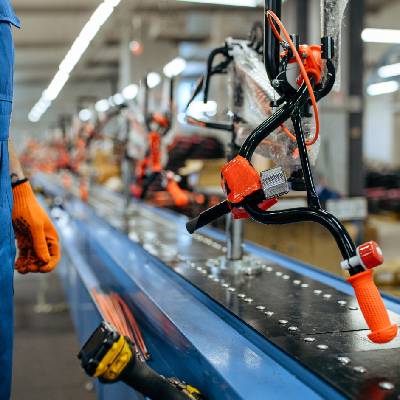

In the industrial automation industry, conveyor system is a crucial tool. Used across various sectors, it runs from warehouses to manufacturing facilities. But what is a conveyor system and how does it streamline the material handling process?
What are Conveyor Systems?
In the world of equipment and material handling, conveyor systems reign supreme for efficiently moving materials. These mechanized marvels act as automated pathways, transporting heavy machinery to groceries. They’re particularly useful for bulky or large items and come in a variety of designs to suit different requirements. From the familiar checkout lanes at supermarkets to complex networks in factories, conveyor systems keep things moving smoothly. They minimize time and effort across countless applications.
Exploring Various Types of Conveyor Systems:
- Belt Conveyor is an omnipresent type, a continuous belt for transporting a wide variety of materials. These belts are commonly found in warehouses.

- Roller Conveyors are ideal for items with rigid, flat bases. These conveyors employ rollers to facilitate movement. There are common sights in airport baggage handling systems.

- Slat Conveyors feature slats or plates instead of a continuous belt, slat conveyors excel at handling heavy or unevenly shaped objects.

- Overhead Conveyors are suspended from the ceiling, these systems provide unobstructed floor space, while efficiently transporting materials along a designated track.
Benefits of Conveyor Systems:
Conveyor systems offer a compelling value proposition for businesses. They eliminate human error and dependence on manual labor. Their design ensures reliable operation with minimal downtime, maximizing return on investment. Furthermore, the customizable nature of conveyors allows them to seamlessly integrate with existing workflows and handle diverse materials in various environments. This versatility makes them a strategic asset for factories, warehouses, and more.
Conveyor systems offer advantages, revolutionizing material handling processes in industrial environments:
- By automating the transportation of heavy or bulky items, conveyor systems significantly enhance operational efficiency, reducing manual labor and time consumption.
- Conveyors can seamlessly change lifting requirements, reducing the obligation for floor space. Instead of dedicating separate areas for loading docks, mezzanines, or high platforms, conveyors skillfully transport goods across different levels. This consolidation reduces the overall footprint required for material handling.
- With streamlined material flow and optimized throughput, conveyor systems contribute to enhanced productivity. This enables businesses to meet demanding production schedules with ease.
- By minimizing human error and mitigating workplace risks, conveyor systems uphold stringent safety standards. This promotes a secure working environment for employees.
Applications of Conveyor Systems
Conveyor systems find extensive applications across diverse industries, such as follows:
- Conveyor systems initiate seamless movement of components and finished products during manufacturing. This results in the functioning of assembly lines.
- In warehouses and distribution centers, conveyor systems are used to streamline order distribution. Followed by expediting the sorting, packing, and shipping of goods, they become extremely crucial in the process.
- Conveyor systems in the food industry promise hygienic material handling. It facilitates the transportation of raw materials, packaging, and finished products with cleanliness.
- In automotive manufacturing, they enable the efficient transfer of vehicle components throughout the production process, from stamping to assembly.
Conclusion:
In modern industrial automation, conveyor systems create more reliable, ergonomic and organized material handling operations. With a diverse range of configurations and applications, conveyor systems offer versatility and reliability. This empowers businesses to streamline workflow processes while enhancing productivity. By understanding the intricacies achieve sustainable growth in today’s competitive landscape these conveyor systems harness the potential, businesses can embark on a journey towards operational excellence and success in the dynamic field of industrial manufacturing and logistics.
ALSO READ
A Guide on Best Conveyor Systems for Automobile Manufacturing
Top 5 Benefits of Integrating Conveyor Systems in Your Warehouse


